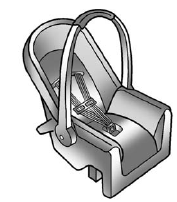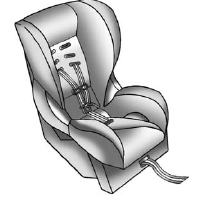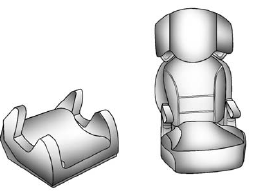Child Restraint Systems

(A) Rear-Facing Infant Seat
A rear-facing infant seat (A) provides restraint with the seating surface against the back of the infant.
The harness system holds the infant in place and, in a crash, acts to keep the infant positioned in the restraint.

(B) Forward-Facing Child Seat
A forward-facing child seat (B) provides restraint for the child's body with the harness.

(C) Booster Seats
A booster seat (C) is a child restraint designed to improve the fit of the vehicle's safety belt system.
A booster seat can also help a child to see out the window.
See also:
Instrument Panel, Vinyl, and Other
Plastic Surfaces
A soft cloth dampened with water may be used to
remove dust. If a more thorough cleaning is necessary,
a clean soft cloth dampened with a mild soap solution
can be used to gently remove dust and ...
Charging System Light
The charging system light comes on briefly when the ignition is turned on, but
the engine is not running, as a check to show the light is working. The light turns
off when the engine is started. ...
Tire Rotation
Tires should be rotated every 12 000 km (7,500 mi). See Scheduled Maintenance
.
Tires are rotated to achieve a uniform wear for all tires. The first rotation is the most important.
Any time unusua ...


